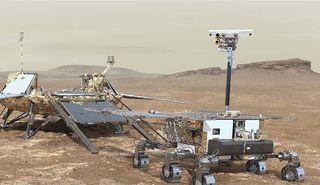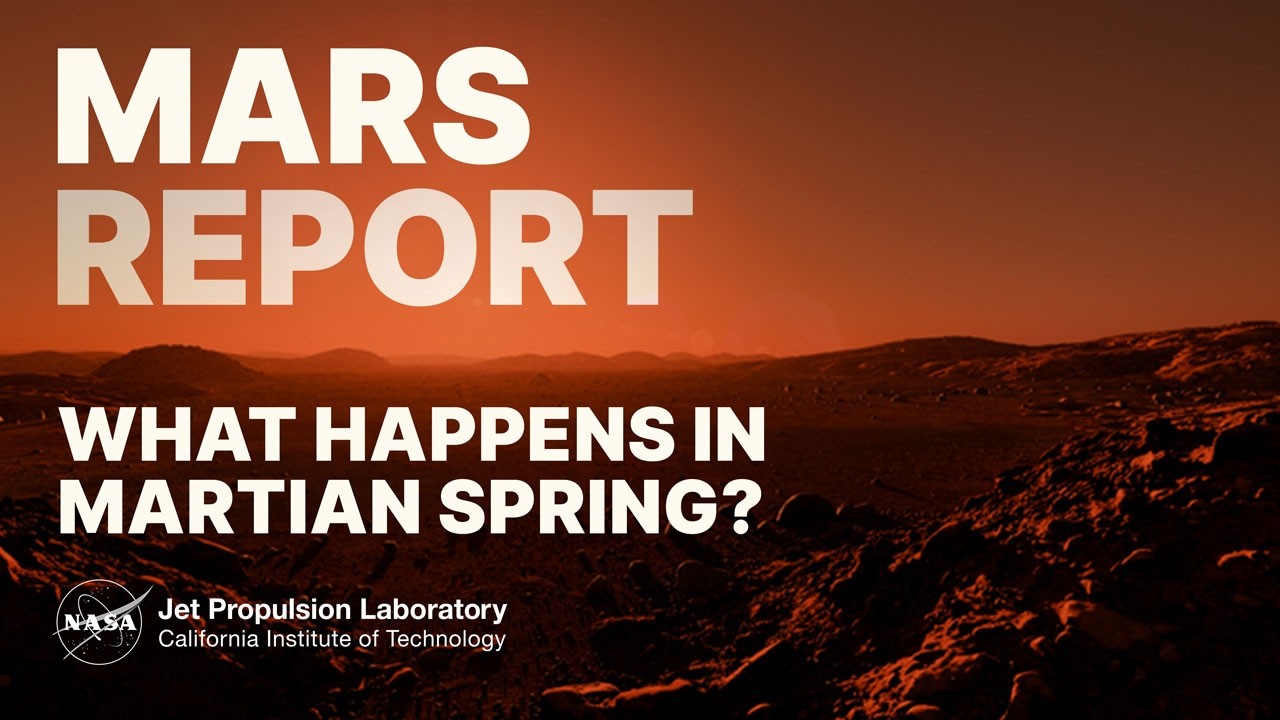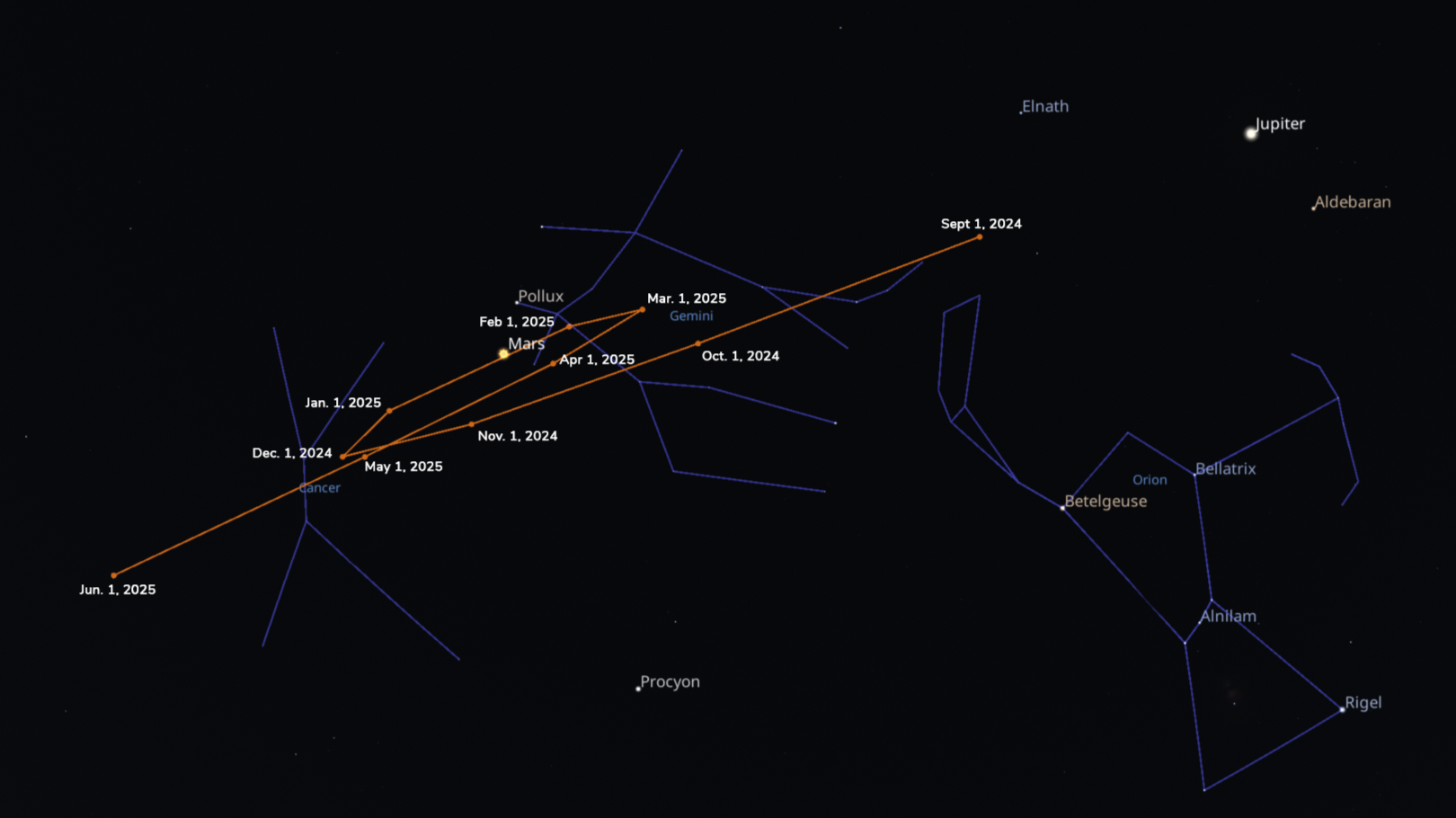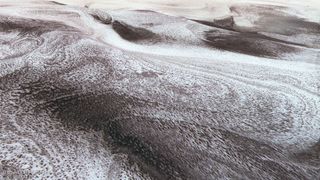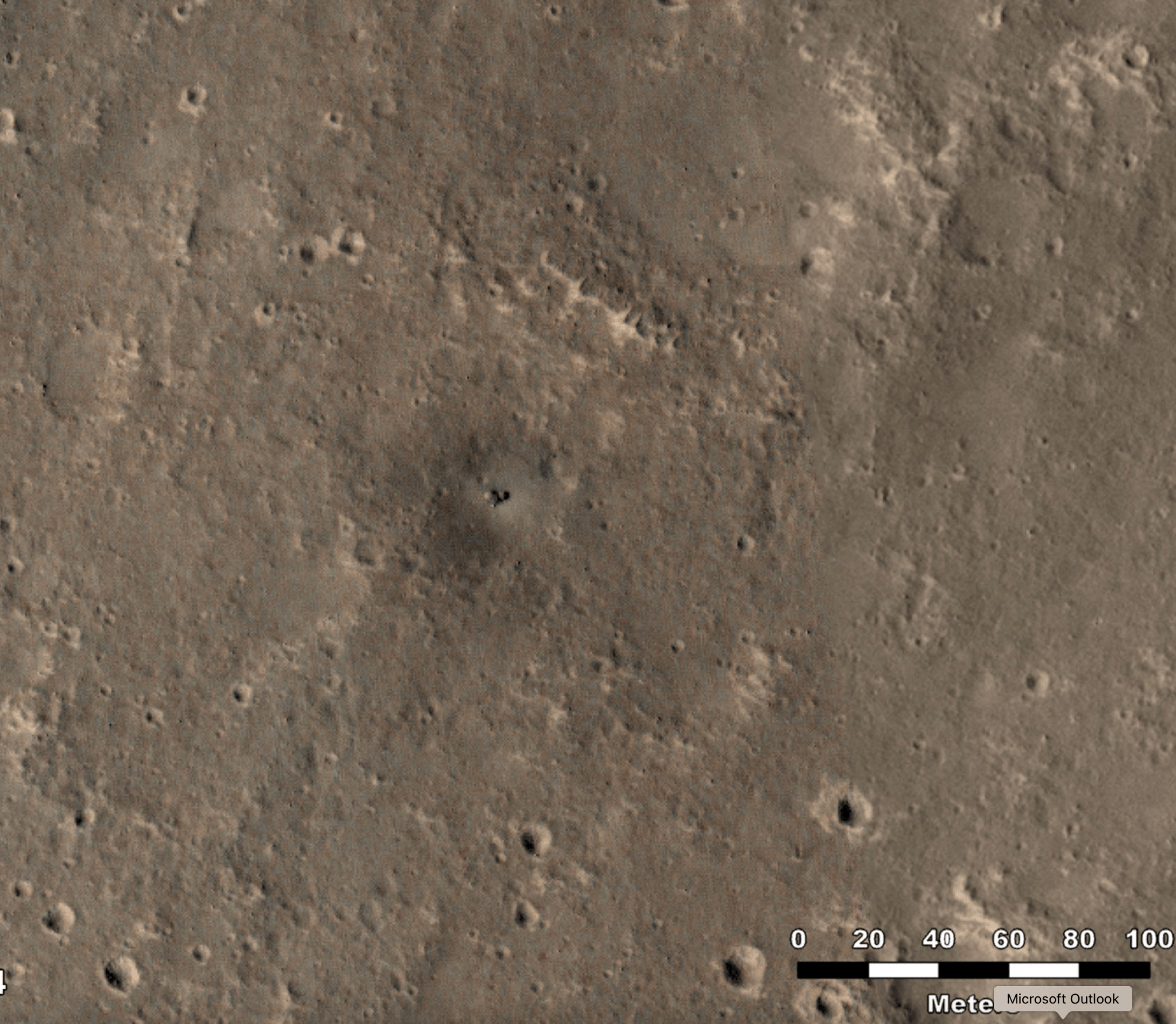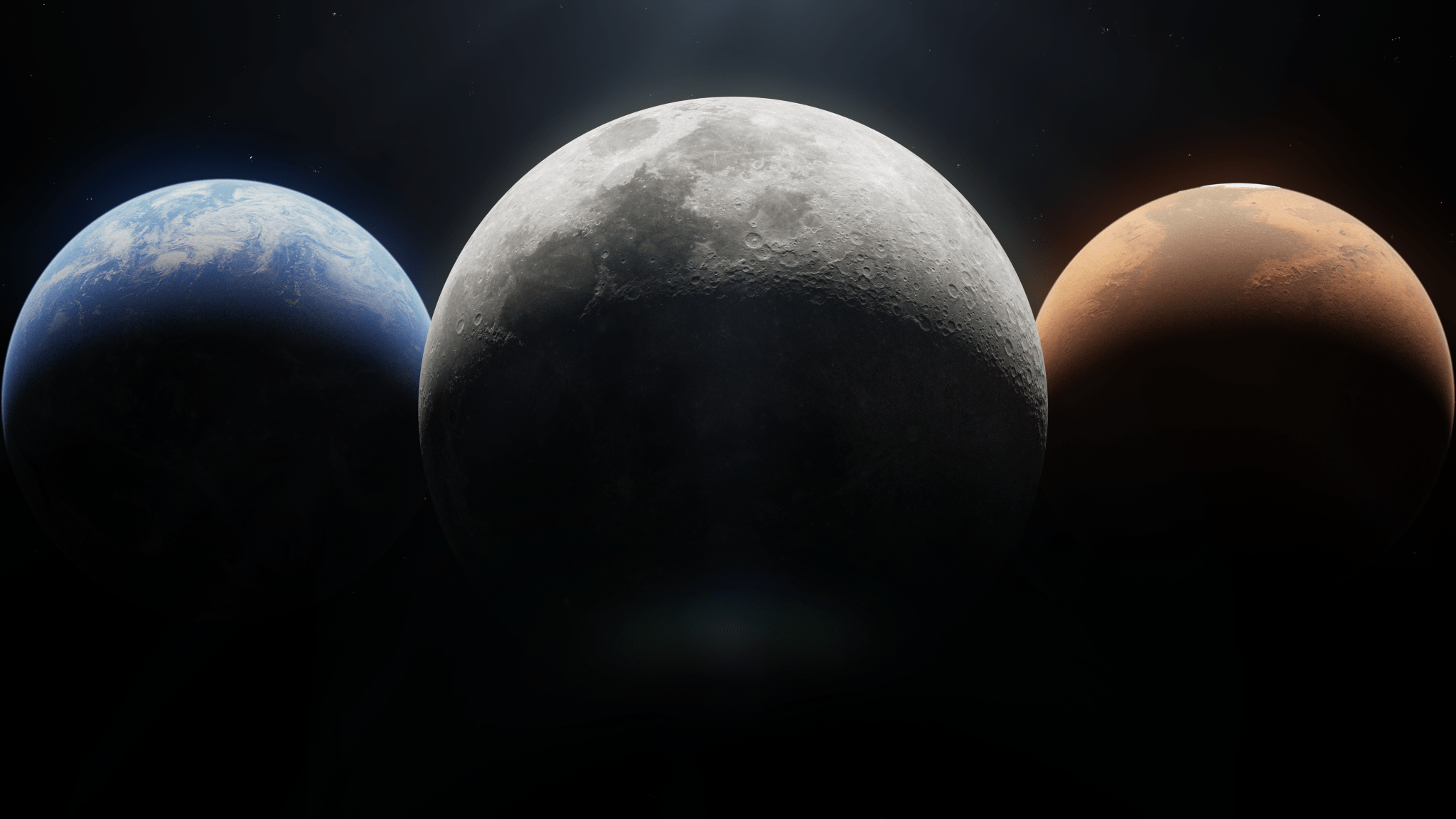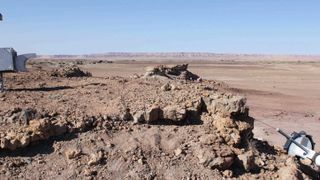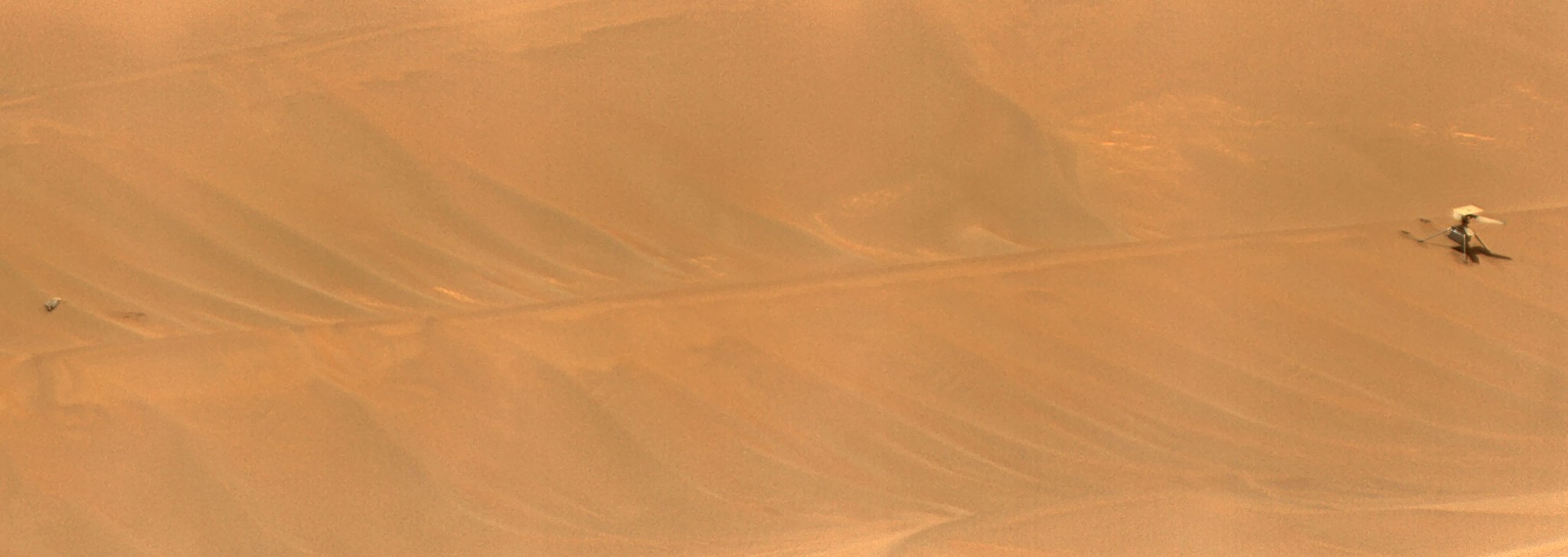Thousands of hills and mounds on Mars have been found to contain layers of clay minerals, which formed when running water interacted with the rocks during a period when Mars’ northern reaches were flooded. “This research shows us that Mars’ climate was dramatically different in the distant past,” Joe McNeil of the Natural History Museum in London said in a statement. “The mounds are rich in clay minerals, meaning liquid water must have been present at the surface in large quantities nearly four billion years ago.” Mars is a planet…
Read MoreTag: Mars
Springtime on Mars brings frost avalanches, gas geysers and explosions (photos)
Instead of chilled glasses and champagne bubbles to ring in the New Year, how about gassy geysers and frosty avalanches? That’s exactly what you can expect as the Martian New Year begins on the Red Planet with the onset of spring across its Northern Hemisphere. The term “walking in a winter wonderland” on Mars consists more like sprinting across the surface, having to dodge the crash of cliffsides and explosions of carbon dioxide. Unlike our northern hemisphere on Earth, on the Red Planet, the new year starts off with the…
Read MoreJanuary’s Night Sky Notes: The Red Planet
3 min read January’s Night Sky Notes: The Red Planet by Kat Troche of the Astronomical Society of the Pacific Have you looked up at the night sky this season and noticed a bright object sporting a reddish hue to the left of Orion? This is none other than the planet Mars! January will be an excellent opportunity to spot this planet and some of its details with a medium-sized telescope. Be sure to catch these three events this month. Martian Retrograde Mars entered retrograde (or backward movement relative to…
Read MoreMars orbiters witness a ‘winter wonderland’ on the Red Planet (photos)
Hoping for a white Christmas this year? Well, even if there’s no snow where you live, at least you can enjoy these images of a “winter” wonderland on Mars. Taken by the German-built High Resolution Stereo Camera (HRSC) on the European Space Agency’s (ESA) Mars Express orbiter in June 2022, and by NASA’s NASA’s Mars Reconnaissance Orbiter using its High-Resolution Imaging Science Experiment (HiRISE) camera on September 2022, these images showcase what appears to be a snowy landscape in the Australe Scopuli region of Mars, near the planet’s south pole.…
Read MoreNASA Mars probe spies dusty, retired Insight lander from orbit (photo)
NASA’s InSight lander continues to contribute valuable knowledge about Mars, even after its retirement. Photos captured in late October by NASA’s Mars Reconnaissance Orbiter (MRO) show InSight resting on the Martian surface. While no longer active, the rover is providing researchers new data on how dust accumulates and evolves over time in the region. “Even though we’re no longer hearing from InSight, it’s still teaching us about Mars,” science team member Ingrid Daubar of Brown University said in a Dec. 16 NASA statement. “By monitoring how much dust collects on…
Read MoreNASA Mars Orbiter Spots Retired InSight Lander to Study Dust Movement
5 min read Preparations for Next Moonwalk Simulations Underway (and Underwater) Seen at the center of this image, NASA’s retired InSight Mars lander was captured by the agency’s Mars Reconnaissance Orbiter using its High-Resolution Imagine Science Experiment (HiRISE) camera on Oct. 23, 2024. NASA/JPL-Caltech/University of Arizona New images taken from space show how dust on and around InSight is changing over time — information that can help scientists learn more about the Red Planet. NASA’s Mars Reconnaissance Orbiter (MRO) caught a glimpse of the agency’s retired InSight lander recently, documenting…
Read MoreNASA Outlines Latest Moon to Mars Plans in 2024 Architecture Update
An artist’s concept of the Earth, Moon, and Mars. Credit: NASA As NASA develops a blueprint for space exploration throughout the solar system for the benefit of humanity, the agency released several new documents Friday updating its Moon to Mars architecture. The roadmap sets NASA on course for long-term lunar exploration under the Artemis campaign in preparation for future crewed missions to Mars. Following an Architecture Concept Review, the 2024 updates include a revision of NASA’s Architecture Definition Document which details technical approaches and processes of the agency’s exploration…
Read MoreNASA’s Mars exploration plans need ‘paradigm shifts’ to succeed, report finds
NASA has released a new document that highlights planned programmatic paradigm shifts in Mars exploration over the next 20 years. This plan was prepared for the NASA Science Mission Directorate’s Mars Exploration Program (MEP). The report is titled “Expanding the Horizons of Mars Science: A Plan for a Sustainable Science Program at Mars — Mars Exploration Program 2024-2044.” Core questions Highlighted in the document are several “paradigm shift” prospects to further address several core questions, which include: You may like How has the habitability of Mars evolved over the history…
Read MoreNASA’s Perseverance Rover Reaches Top of Jezero Crater Rim
5 min read Preparations for Next Moonwalk Simulations Underway (and Underwater) NASA’s Perseverance Mars rover used its right-front navigation camera to capture this first view over the rim of Jezero Crater on Dec. 10, 2024, the 1,354th Martian day, or sol, of the mission. The camera is facing west from a location nicknamed “Lookout Hill.” NASA/JPL-Caltech NASA’s Perseverance Mars rover captured this scene showing the slippery terrain that’s made its climb up to the rim of Jezero Crater challenging. Rover tracks can be seen trailing off into the distance, back…
Read MoreNASA Performs First Aircraft Accident Investigation on Another World
5 min read Preparations for Next Moonwalk Simulations Underway (and Underwater) NASA’s Ingenuity Mars Helicopter, right, stands near the apex of a sand ripple in an image taken by Perseverance on Feb. 24, 2024, about five weeks after the rotorcraft’s final flight. Part of one of Ingenuity’s rotor blades lies on the surface about 49 feet (15 meters) west of helicopter (at left in image). NASA/JPL-Caltech/LANL/CNES/CNRS The review takes a close look the final flight of the agency’s Ingenuity Mars Helicopter, which was the first aircraft to fly on another…
Read More